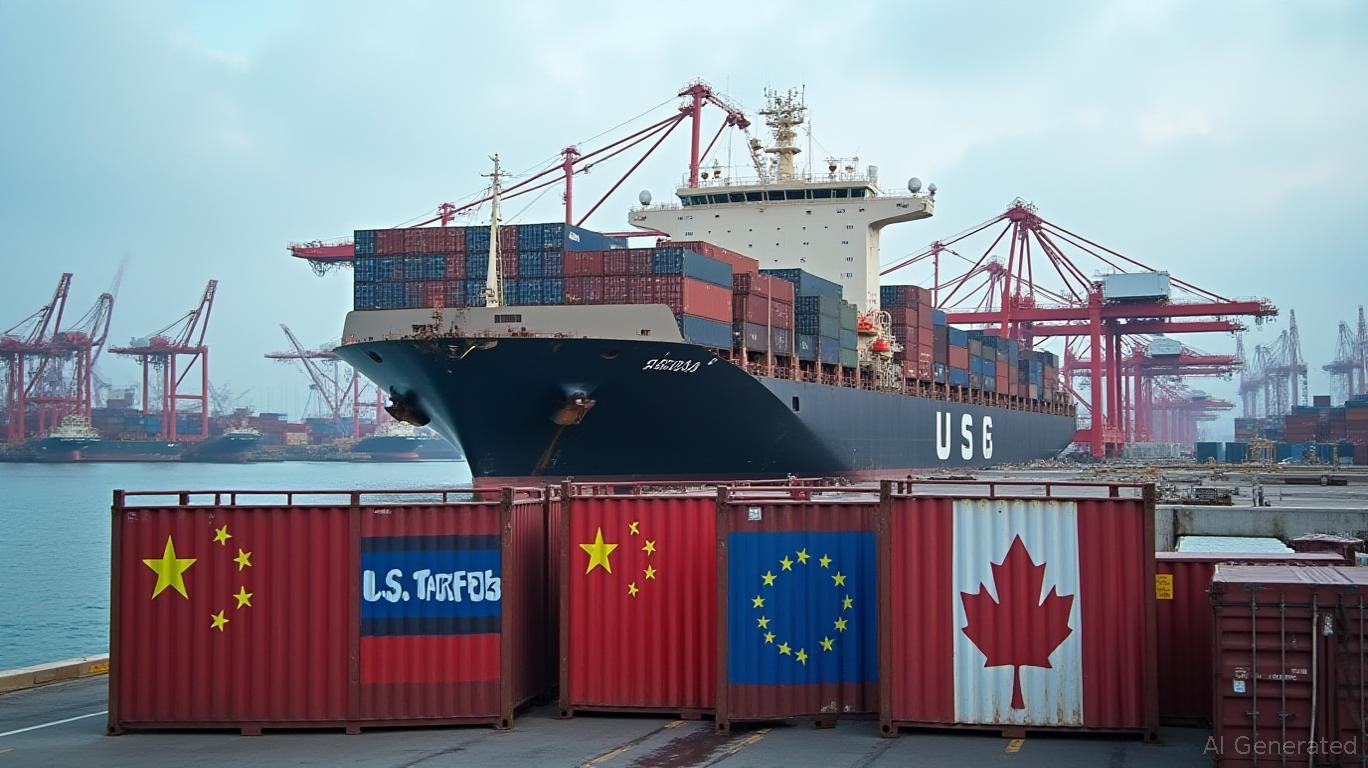Navigating the Tariff Minefield: How U.S. Trade Policies Are Reshaping Supply Chains and Investment Strategies
The U.S. tariff landscape in June 2025 has reached a boiling point, with reciprocal tariffs, legal battles, and geopolitical tensions reshaping global trade dynamics. As deadlines loom—most critically July 9—the ripple effects of these policies threaten to disrupt supply chains, inflate compliance costs, and create stark winners and losers among industries. For investors, this is not just a policy debate but a blueprint for risk management and opportunity hunting.

The Tariff Tsunami: Key Developments and Vulnerabilities
The U.S. has weaponized tariffs to enforce reciprocity, with baseline rates at 10% but escalating to 50% for select countries (e.g., EU, China). Legal challenges are stalled, and critical sectors like steel, aluminum, and automobiles face immediate pressure. Here's how industries stack up:
1. Manufacturing: Bracing for Cost Inflation
- Steel/Aluminum Producers: Companies relying on imported raw materials are in the crosshairs. A 50% tariff on steel imports (25% for UK-origin goods) has forced manufacturers to either absorb costs or hike prices.
- Automakers: Non-USMCA-compliant vehicles face 25% tariffs, squeezing margins. Even USMCA-aligned firms like (TM) or Ford (F) may struggle with regional sourcing mandates.
- Consumer Durables: Appliances like washing machines and refrigerators now carry tariffs on imported components, risking price spikes.
Caterpillar, a bellwether for industrial demand, has seen its stock wobble as tariffs on imported steel and aluminum eat into margins. Shorting manufacturers with inflexible supply chains—especially those sourcing heavily from high-tariff regions—appears prudent.
2. Logistics: Navigating Delays and Complexity
- Freight Costs: Tariffs have created choke points at borders, increasing customs delays and compliance paperwork. Logistics firms like (FDX) or Maersk (MAERSK-B.CO) face higher operational costs.
- Route Redesign: Companies rerouting supplies to avoid tariffs (e.g., shifting from China to Mexico) may incur longer lead times and higher transportation expenses.
Freight rates have surged as companies scramble to adjust routes, squeezing margins for logistics players. Short positions here could capitalize on this inefficiency.
3. Consumer Goods: The Price-Sensitivity Trap
- Household Appliances: Tariffs on steel-intensive goods like refrigerators have already led to price hikes. Firms like (WHR) or Electrolux (ELUX-B.ST) face margin pressure.
- Luxury Goods: The EU's threat to tax American alcohol (e.g., bourbon) and the U.S. retaliation on European wines could disrupt premium markets.
Consumer discretionary stocks have lagged as inflation fears rise. Companies unable to offset tariff costs via price hikes or sourcing shifts risk falling out of favor.
Investment Playbook: Short the Fragile, Long the Agile
Short Candidates:
- Single-Sourcing Giants: Companies reliant on China for critical components (e.g., Apple's (AAPL) iPhone supply chain) or European auto parts.
- Legacy Manufacturers: Firms like (HOG), which sources steel from high-tariff regions, could suffer as costs rise.
- Logistics Laggards: Firms with outdated compliance systems or overexposure to delayed ports.
Long Opportunities:
- Compliance Tech Providers: Companies like (SAP) or Coupa Software (COUP), offering AI-driven supply chain optimization and customs automation tools.
- Diversified Suppliers: Firms like Flex Ltd. (FLEX) or (EMR), which have global sourcing networks and can pivot quickly.
- Trade-Neutral Sectors: U.S.-focused industrials like (MMM) or Stanley Black & Decker (SWK), which benefit from domestic demand and minimal tariff exposure.
The July Crossroads: A Catalyst for Volatility
The July 9 deadline for reciprocal tariffs and the July 31 legal appeal on “fentanyl” tariffs will be pivotal. A failure to reach deals with the EU or China could trigger a “tariff shock,” amplifying compliance costs and supply chain bottlenecks. Investors should:
1. Hedge Exposure: Use short puts on vulnerable sectors ahead of the July deadlines.
2. Monitor Trade Deals: U.S.-UK-style agreements (e.g., lower auto tariffs) could create outperformers in targeted industries.
3. Stay Flexible: Companies with agility to shift suppliers or automate compliance (e.g.,
Conclusion: Adapt or Fade
The U.S. tariff regime is a Darwinian test for businesses. Those with rigid supply chains and limited compliance tools are sitting ducks for margin erosion. Meanwhile, firms that diversify sourcing, invest in tech-driven solutions, or tap into trade deals will dominate. Investors ignoring these dynamics risk being blindsided by a market reshaped by tariffs—not just in 2025, but for years to come.
The next 60 days will separate the wheat from the chaff. Position accordingly.

Comments
No comments yet